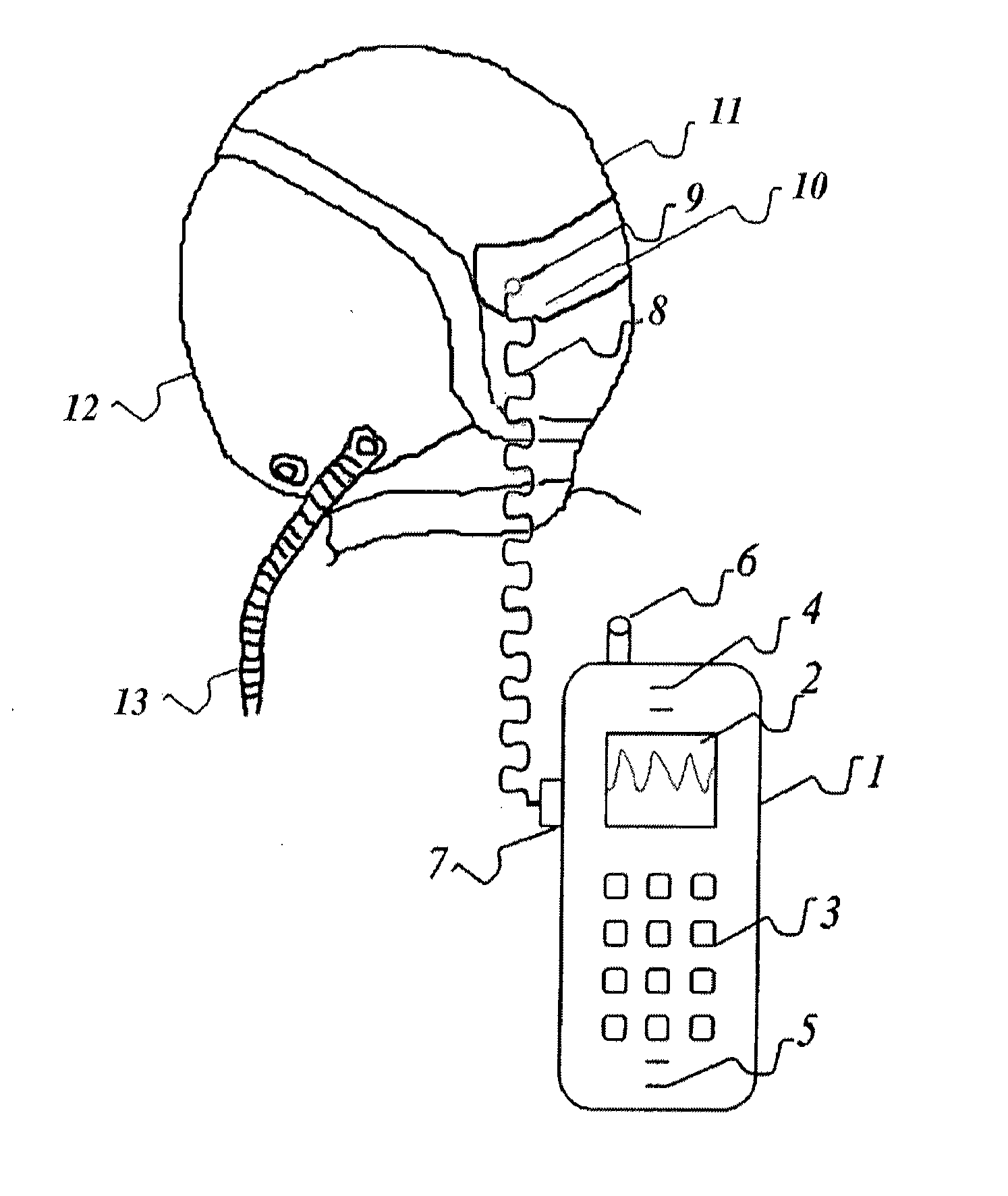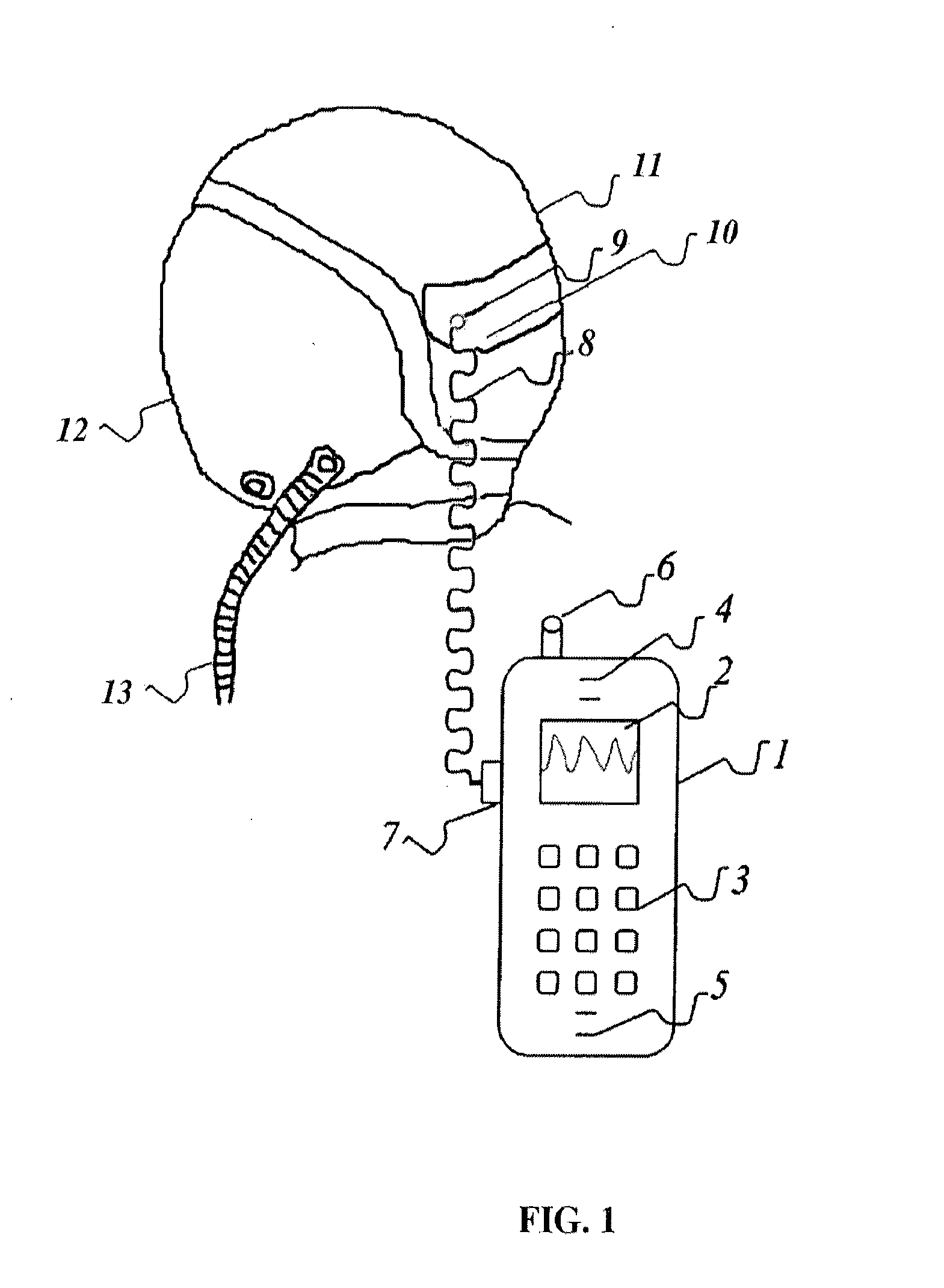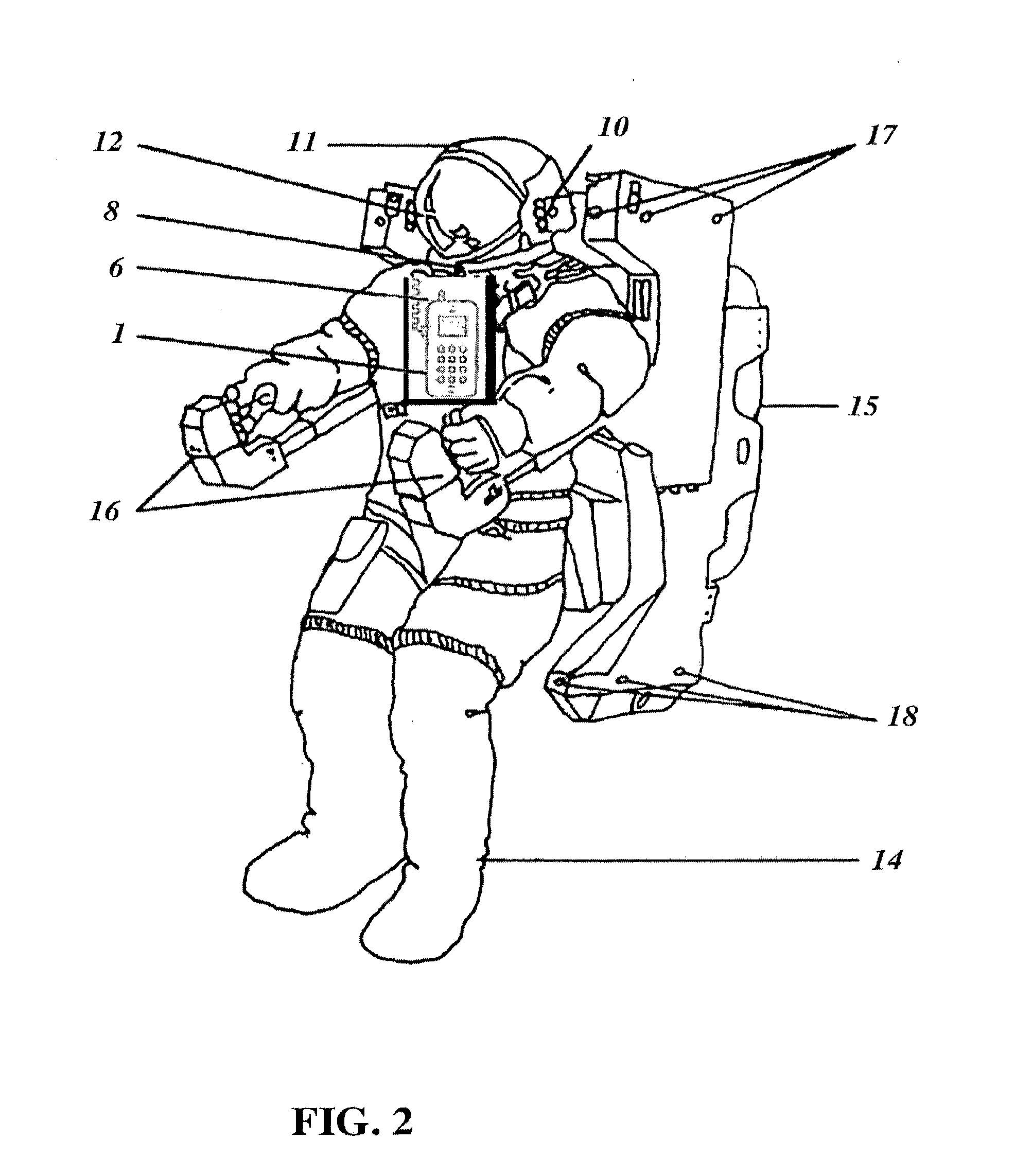Neuravionic System for Life Support in High Performance Avionics
a technology of avionics and neuronal valves, applied in the field of neuronal valves for life support in high-performance avionics, can solve the problems of preventing gloc, affecting the determination of mental state, and limiting the assessment of the benefits of pbg, so as to prevent gloc and regulate the autonomy-decision-making level, the effect of preventing the loss of consciousness and determining the mental state of being
- Summary
- Abstract
- Description
- Claims
- Application Information
AI Technical Summary
Benefits of technology
Problems solved by technology
Method used
Image
Examples
Embodiment Construction
[0045]FIG. 1 shows a crewmember in a helmet with head mounted display and PBG fittings affixed with the headgear of the present invention. As shown, the transcranial Doppler device 1 connected to a microcomputer with spectrum analyzer 2, input keyboard 3, loudspeaker 4, microphone 5, and an aerial 6 for wireless communication. The port 7 is provided for attachment of the transducer cable 8 from the transducer 9, placed within a probe housing 10, integrated into the helmet 11. Similar miniaturized TCD device could be obtained from a company called DWL (Sipplingen, Germany), and similar automated headgear for positioning the transducers could be obtained as model ROBOTOC2MD from a company called Multigon (Yonkers, N.Y.), by way of example. The flight parameters, TCD parameters and neuropsychological test battery are shown on the head mounted display visor 12. The PBG fittings and tube 13 are attached in front.
[0046]FIG. 2 shows an astronaut in a space suit on a manned maneuvering unit...
PUM
 Login to View More
Login to View More Abstract
Description
Claims
Application Information
 Login to View More
Login to View More - R&D
- Intellectual Property
- Life Sciences
- Materials
- Tech Scout
- Unparalleled Data Quality
- Higher Quality Content
- 60% Fewer Hallucinations
Browse by: Latest US Patents, China's latest patents, Technical Efficacy Thesaurus, Application Domain, Technology Topic, Popular Technical Reports.
© 2025 PatSnap. All rights reserved.Legal|Privacy policy|Modern Slavery Act Transparency Statement|Sitemap|About US| Contact US: help@patsnap.com



